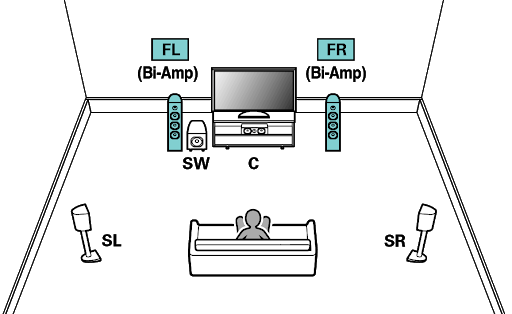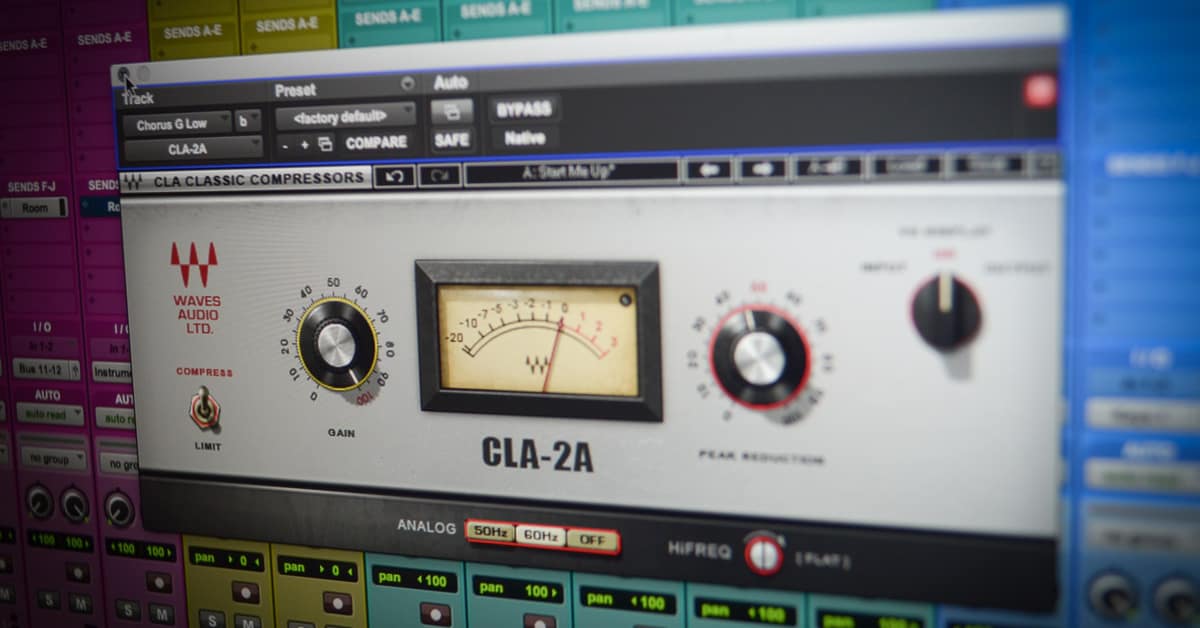If you’re an audiophile, you probably already have this whole decision-making process figured out. But for ordinary folks, choosing between stereo vs surround sound might require some discernment. We’ll delve deep into the details to give you a better idea of how each works, and hopefully, it will help you pick the best choice: one that suits your budget and provides for your audio needs while still delivering the ultimate listening experience.
Stereo vs Surround Sound: What’s the Difference?
What are the differences between stereo vs surround sound? It’s all based on how sound is manipulated, segmented, and distributed in a given space.
How Stereo Works
Stereophonic or stereo sound uses two channels (or two speakers) to produce sound. You can complement the sound by using a sub-woofer, which reproduces it from a low bass range.
Stereo makes use of a front left and a front right speaker to provide what appears to be a performance stage in front of you. Sound mixing for stereo can vary between the left and right channels and center.
Earphones, headphones, computers, portable CD and DVD players, boom boxes, iPods, and other MP3 players typically use stereophonic sound, so it’s more predominantly used as compared to surround sound.
How Surround Sound Works
Surround sound (or multichannel, or surround channel, sound) makes use of five or more speakers (typically up to seven) to produce sound. Surround sound was designed in such a way it creates an all-encompassing sound-field: front, back, both sides, and even above you.
Surround sound gives you a perception of depth. This means you hear it with the volume and intensity where it makes sense as if it were a live event. Surround sound can achieve what is called the Doppler effect: a change in the wavelength or frequency of sound in relation to how a source moves toward or away from an observer.
For example, a motorcycle is driving at a distance on the screen. The noise of the engine becomes louder and more defined as the motorcycle approaches the viewer. Conversely, the sound lessens in intensity and becomes more distant as the motorcycle moves away from the viewer.
The experience gives you a 360-degree cinematic experience, making you feel as though you’re a part of the scene. This gives surround sound a better ambient quality as compared to stereo. A perfect example that uses 3d sound is a home theater system.
So now you know the significant differences between stereo vs surround, how do you decide which one’s the best for your audio needs?
Ideal Use for Stereo
In the battle between stereo vs surround, we would have to say that stereo sound will emerge victorious for listening to music.
Music is typically recorded for playback in stereo and does not need directional sound. While some newer music recordings are available in multichannel sound, with music, stereo sound is still king. Listening in stereo is also more convenient and affordable since most technologies already have just two audio channels, and the stereo speakers are built-in.
Ideal Use for Surround Sound
If you’re into action movies, or film in general, installing a surround sound system can significantly enhance your viewing experience, especially since most movie soundtracks these days are recorded to accommodate surround sound.
Maximize the sound work put into that movie by creating a sonic environment that immerses you into the scenes. A surround sound system is replete with optimum features such as ambient or point-source surround effects, a wide dynamic range, a center channel for dialogue, and deep-bass capabilities.
Components
A surround sound system typically requires the use of 5 to 7 speakers (often referred to as 5.1 or 7.1) and a subwoofer. 5.1 means there are 5 speakers and 1 sub-woofer while 7.1 means there are 7 speakers and a sub-woofer.
Set Up
To set up a surround sound system in your living room, you will need three speakers along the front wall with the TV; a center speaker is placed above or below the screen while the other two are placed on the left and the right of the screen, respectively.
The last two speakers can be placed either on the side or rear wall. But remember, these speakers can’t just be placed randomly; read the manual, and install each of them the right way.
Speaker Functions
To elaborate, the center channel speaker is meant to reproduce the hi-fi sounds (mainly dialogue) in a movie. The design is flatter and wider compared to the other speakers because it broadens the soundstage for dialogue. This design also makes it ideal to be placed above or below your TV screen.
The front speakers and left speakers can also reproduce dialogue (when the characters move to the left or the right of the screen) but are mostly used to reproduce music, and sound effects while the left and right rear speakers, or surround speakers, are meant to reproduce surround music and effects.
The subwoofer’s role is to play the range of LFE (low-frequency effects) or sounds.
This set-up makes for an all-encompassing sound direction that envelopes you and immerses you, as though you’re actually in the scene you see on the screen. If you take these ambient sounds seriously, then a surround sound system is good to have.
4 Factors to Consider When Choosing Between Stereo vs Surround
When deciding between a 2-channel system (stereo) vs surround sound technologies, there are some important factors that should be considered before making your choice.
1. Space
The first thing you need to look into is space — do you have enough of it? Are you setting up in a considerably huge space, or do you have a small apartment that can’t comfortably accommodate a multi-equipment surround sound system?
The bigger the space, the harder it will probably be to decide between the two. Also, a bigger room will demand more power from your sound system; more power from your sound system means more money from your wallet.
2. Frequency of Use
The second factor to take into consideration is how often you will use your sound system. Do you play music in the background, or do you listen closely and place yourself into a more immersive experience? Do you listen to music more than you watch movies?
Are you into watching action films in full volume, or do you prefer more laid-back romantic comedies that don’t necessitate much of that 360-degree cinematic experience (explosions, car chases, etc.)?
3. Purpose
Having clearer preferences will help you assess your audio needs a lot better. It is important to factor all these considerations before choosing which system to go for.
If you enjoy listening to music as much as watching movies, this can pose a big dilemma while you’re weighing the pros and cons of stereo vs surround sound.
For Music Listening
While music is generally not recorded for multichannel playback, a surround sound system can still be great for music. Though, different elements are not going to come from different speakers (aside from right and left).
There are also enhanced surround sound systems that can play great quality stereo music.
There seems to be an ongoing and debatable assumption that surround sound is better than stereo. This is not necessarily true. Yes, a surround system has more bells and whistles (and speakers!) as compared to a stereo system; however, that does not diminish the value of stereo sound in delivering the intent and integrity of a music recording.
Value
When considering cost, think of this scenario: two stereo speakers vs five surround sound speakers that cost about the same. Which one do you think will have higher quality speakers? It’s likely that you’ll get high quality stereo speakers, since the manufacturer is only selling 2 speakers.
However, in terms of sound distribution, the five speakers will deliver their purpose for being — to surround you with the sonic atmosphere you need to appreciate a movie fully.
Vinyl and Quadraphonic Sound
Something else to consider is how you are planning on listening to music. Vinyl has made quite a comeback over the past decade, and another type of audio system to consider is quadraphonic, or 4.0 surround sound.
It was developed in the ’70s specifically for listening to record players and has 4 speakers and no subwoofer. The idea is to place one speaker in each corner of the room in order to get the desired effect.
4. Financial and Other Considerations
There is a caveat, though; those surround sound speakers will also require more amplification plus a surround sound decoder; thus, you will need more “ka-ching” to reverberate.
Set Up
Additionally, setting up surround sound tends to be a bit more difficult than just setting up 2 speakers. You’ll have to consider speaker placement, and possibly mount the rear speakers to your wall.
Amplification
A two-speaker stereo system will most likely require less amplification and will have entirely no need for a decoder—meaning a simple amplifier (assuming they’re not self-powered) will do the trick.
Surround Sound & Music
If you love listening to classical music or live classical performances, a stereo playback will deliver everything in the front — instruments, ambiance, and all the other elements involved.
However, a surround sound system will give you an entirely different experience; although the speakers won’t each be playing different instruments (unless the music was engineered for surround sound), the ambiance will be steered to the sides and rear, emulating what you would hear if you were watching the performance in real life.
If you’re particular about those little things, then a more costly surround sound system will be worth every cent.
Conclusion
Whichever you end up choosing, remember that it’s all about purpose, with the cost being a big consideration. Don’t invest in an expensive sound system that will only gather dust in the long run. Sure, your habits and preferences may change over time, but the important thing is to make an informed decision while you’re deciding which best suits your audio needs in the present.
Testing the waters is always the best way; do some thorough research, and read reviews. Choosing the best sound system may not be as major a decision as buying a new car (though, for a true audiophile, it might feel that way), but it’s still an investment that requires mindfulness.
Once You Decide Between Stereo vs Surround Sound
The process doesn’t end with just choosing between stereo vs surround, either. You still have to figure out which brands and set-up will work for you. This is the part where reading up on reviews, and technical advice online will come in handy.
If you’re still not confident about making such a big purchase, the best solution is to start with what’s reasonable and affordable. You don’t have to go all-out right away. Delve deeper into the listening experience as you go along — it will help you zero in on your more specific preferences and will help you make the best decision later on.
In technology, nothing is carved in stone. Both stereo and surround systems can radically change in a short span of time, and the good news is they can only keep improving!
One More Option: the Virtual Surround Sound Bar
One more option that wouldn’t fall into just one of the above categories is a virtual surround sound bar. Perfect for smaller spaces and budgets, this is a great alternative to a more expensive, permanent surround sound wire-in, especially for those who will be using it for more movies than music.
Dolby Atmos offers incredibly high-quality technology surround sound in a wide variety of different sound bars from different brands, with quite a large price range. On Amazon, The least expensive was $179, ranging all the way to $2,500 for a top of the line Dolby Digital Soundbar.
Final Words: Getting the Most out of Your Setup
There are ways to enhance your listening experience if you have a stereo sound system. For one, room acoustics can play a big factor; carpets, rugs, drapes, and cushioned furniture are good in absorbing sound reflections, making for a better listening environment.




